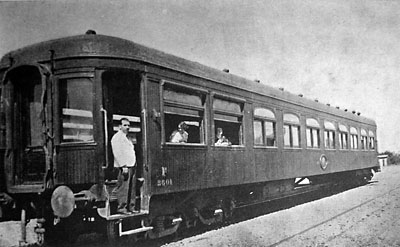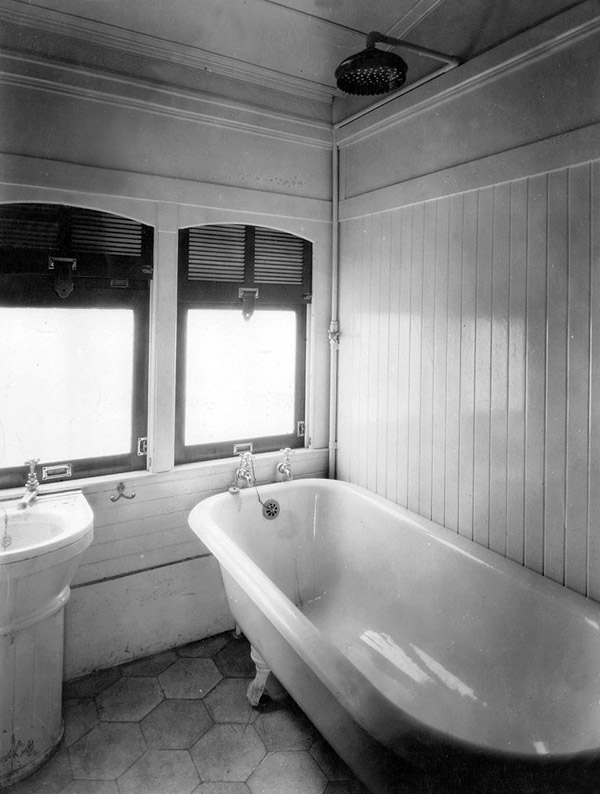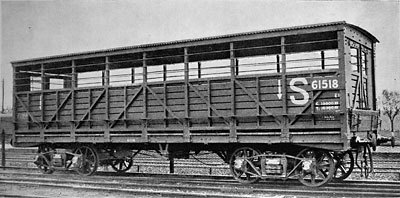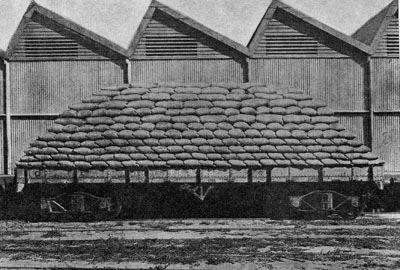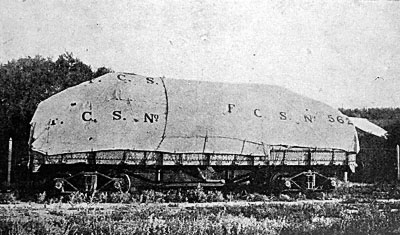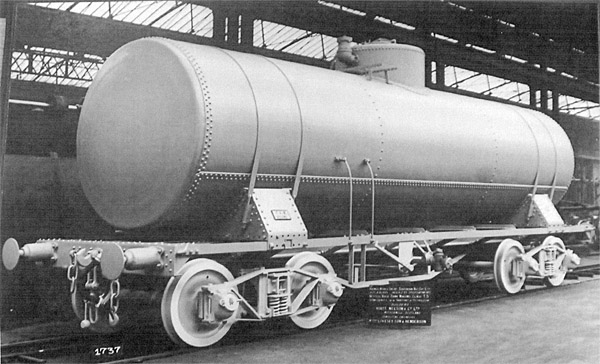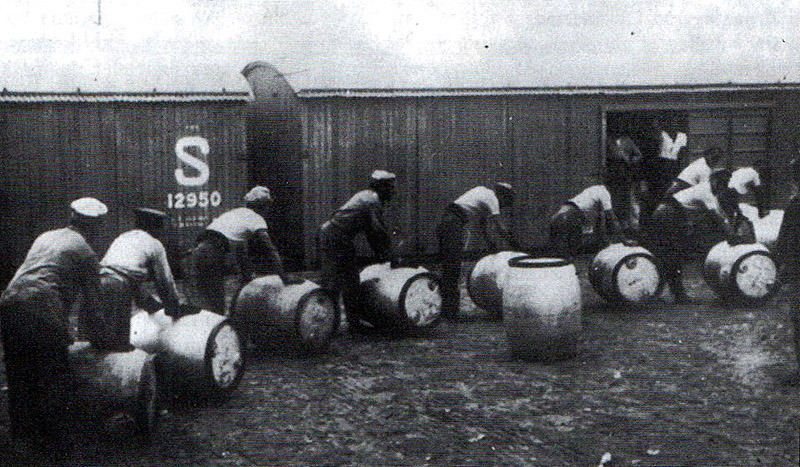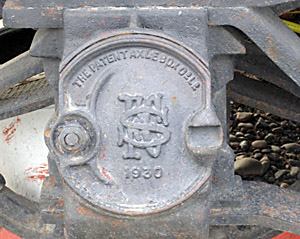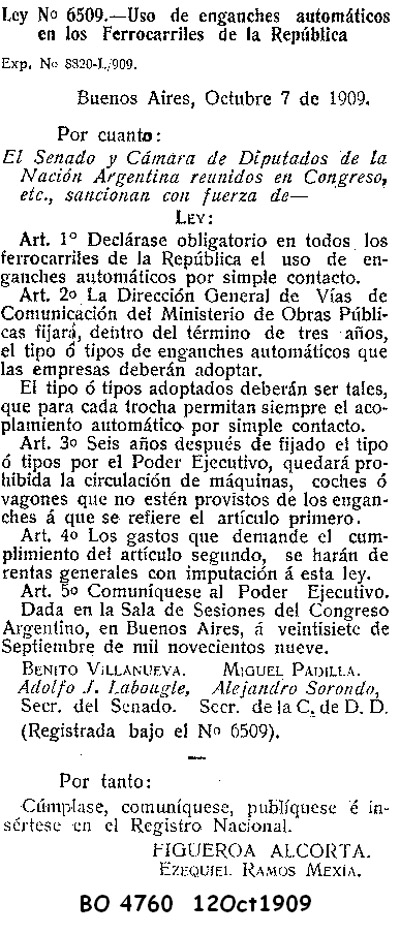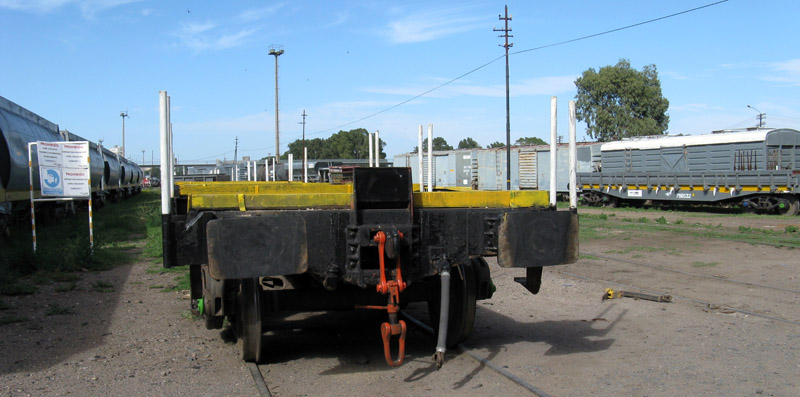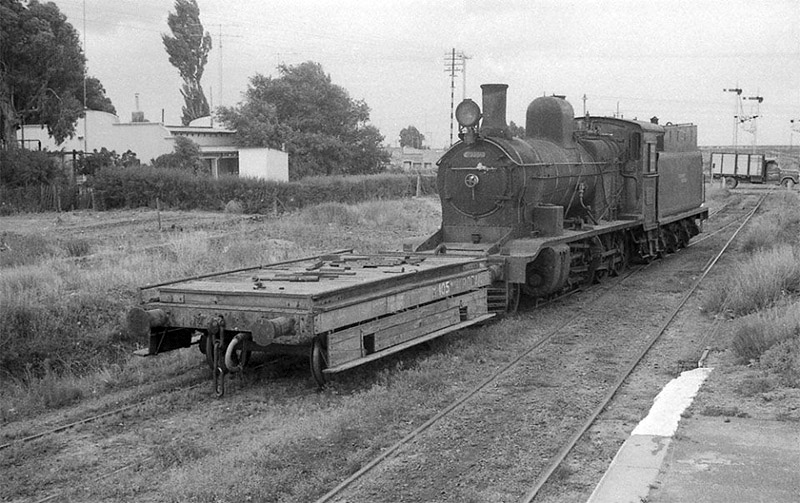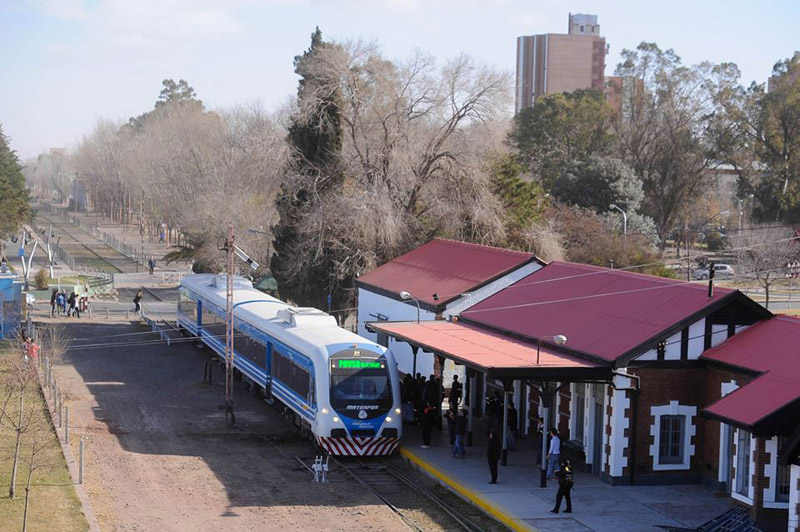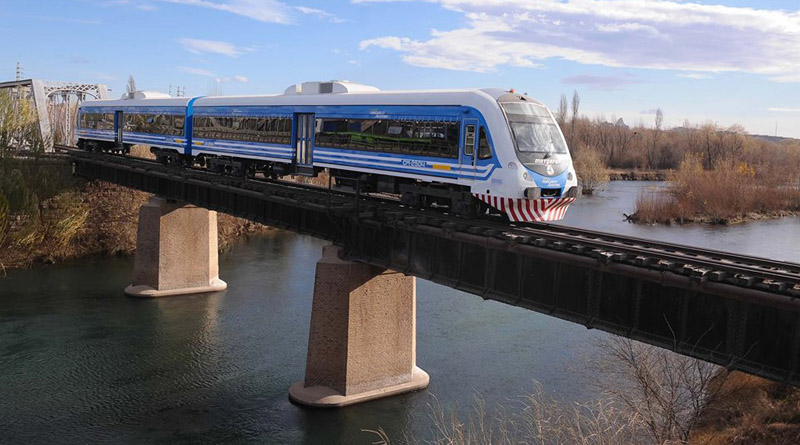 |
|||||||||||||||
 |
|||||||||||||||
 |
|||||||||||||||
 |
|||||||||||||||
Carriages and wagons Rumbo al Sud is a web magazine under the editorship of Señor Marcelo Arcas. It deals with the history of railways south of Buenos Aires. It includes a paper on the history of the coaches of the FC Sud from its inauguration until nacionalization. The FCS did not dedicate stock particularly to a single route, but nevertheless it helps in the understanding the variety of stock that may have been used on the Neuquén line. It can be found ( in Spanish of course) at <http://usuarios.lycos.es/arcasm/j-coches1.htm> (1). Link currently (January 2011) unavailable. It is believed that the following five photos were taken by Mr. Coleman. They were found in his autobiography. (2) First class coach no. 2601, mounted on six wheel bogies, and being used as an inspection saloon. One of three of this type built in 1924.
This is a view of a bath provided in a FC Sud coach. It is more likely to be in a coche oficial where senior staff might spend several days living on and working out of the train. While the bath had hot and cold water, it rather looks like the super-sized shower head was fed with cold water only. (3)
A livestock wagon of the usual Argentine type, with end doors so that the animals could walk on from an end ramp and fill the whole train in one operation.
In contrast is this view at Pichi-Mahuida of a double deck sheep wagon about to be loaded through the end door via a ramp. Date – early 1930s.
An open wagon, which would have been capable of carrying a maximum load of 45 tonnes, though when loaded with grain in sacks as here 33 tonnes would be a more likely maximum.
Baled alfalfa, presumably for livestock feed, being measured to ensure it was within the loading gauge.
Another photo of a loaded wagon. The method covers a wagon with three tarpaulins, arranged with the first two at the front protecting the load in the direction in which the train will proceed.
A view found in the Motherwell Heritage Centre of a petroleum tanker built by Hurst Nelson and Company of Motherwell in the 1920s for conveying oil from the oil fields of Neuquén. The board indicates that Livesey, Son and Henderson, the railway's London-based consulting engineers, were involved in its design, which can be recognised in the tank and its mounting, still evident today in some of Ferrosur Roca's tankers, and the characteristic axle box seen in close up further down the page.
The plate on the left hand mounting carries on two lines F. C. S. and the fleet number. Screw couplings and side chains are provided, as is a continuous vacuum brake. Only one side chain has a hook, the other has merely three links, thus ensuring that they are connected as required by the rules, see extract from the Southern's 1928 Rule Book, kindly provided by Señor Héctor Guerreiro of Bahía Blanca, below. "Art. 234. Central threads and auxiliary chains. This view was found on a Comodoro Rivadavia Facebook page indicating that liquid fuel was being loaded in 1932. The big S on the van shows that it belongs to the FC Sud. The guess is that petrol or kerosene is being loaded at Bahía Blanca (where there was a big refinery) and is being sent out to the camp for distribution to local retailers. While the use of closed vans for this traffic may seem strange, it is explained by the need for its being kept locked up to avoid pilfering or accident. (4)
An FCS wagon axlebox cover, photographed in 2011.
On 7 October 1909 a Presidential Decree (see below) was issued requiring the use of automatic couplings on all railways in the Republic. The British broad gauge companies resisted, and to this day the goods rolling stock on the broad gauge lines uses side buffers and screw couplings. However, when new stock was being built in the 1970s, provision was made to allow an easy change over, as can be seen in this end view.
The Rolling Stock Engineer at Ingeniero White works indicated that a start was made in the conversion at that time (1970s), using the automatic coupling within fixed or semi-fixed rakes of wagons, which kept their buffers and screws at each end. However they found that the automatic coupling unsatisfactory as it displayed a propensity to uncouple when the train was in transit and so they reverted to buffers and screws.
In the early 1970s Marcelo Arcas snapped No 4200, the last of the class 11B 2-8-0s at Patagones, acting as station pilot with a four wheel shunters' truck. Note how the wagon has its sides boarded in to improve safety and comfort for those riding on it.
Return of the passenger service This view was found on Facebook and it shows the train at Neuquén. The signal has been out of use since the 1990s, but the three lever ground frame just in front of the unit is still in use, betraying its British origins in that one of the levers controls the facing point lock, a feature which is not always present on Argentine passenger lines. (5)
Also on the same posting was another view showing it leaving the Cipolletti side of the big bridge over the Neuquén.
The service provided comprises 10 round trips a day at 70 minute headway. The operator is not a private concessionaire, nor either of the two provinces, but central government. On 23 April 2015 the Diario Río Negro published a surprisingly technical article on the rail car. It is one of twenty broadly similar units, called cero kilómetros, built by Materfer in Ferreyra in Córboba province (originally this plant was run by Fiat and produced railcars), some running on medium (ie standard) gauge for Entre Ríos and narrow (ie 1 metre) gauge for Chaco and Salta, in addition to this one for broad gauge. (6) The unit comprises a motor coach and trailer. Power comes from a Scania diesel engine with hydraulic transmission. Each coach has a capacity for 72 on non-reversible reclining seats with seat belts. There is a toilet in each coach and lighting, as befits a modern design is LED. There are security cameras within and externally for a rear view. Despite one or two problems resulting in significant suspensions of the service, it is clear that it has been quite a success in reducing mobility difficulties between Neuquén and Cipolletti along Ruta 22, so that communities along the río Limay and río Negro are now (2021) pressing for the service to be extended from Senillosa in the west to Villa Regina in the east, a distance of no less than 106 km. (7) In Neuquén itself, between the town centre, where the existing station is (Central), and Plottier, no fewer than four additional halts are proposed, including one convenient for the airport (Ignacio Rivas, Eton, El Cholar and Aeropuerto). (8) None of the existing stations involved have more than a single platform; over such a distance any meaningful service would require passenger trains from opposite directions to pass each other. There has been no discussion so far as to how passenger trains would cross each other; nor has the provision of platforms to match the floor height of the vehicle, as has been done in most other places where such services have been introduced in the form of heavy rail or light rail (Tren Urbano) elsewhere in the country. References: 18-3-2021 |
|||||||||||||||
Main pages
Appendices
Chapter 3
The BAGSR's route to Neuquén


